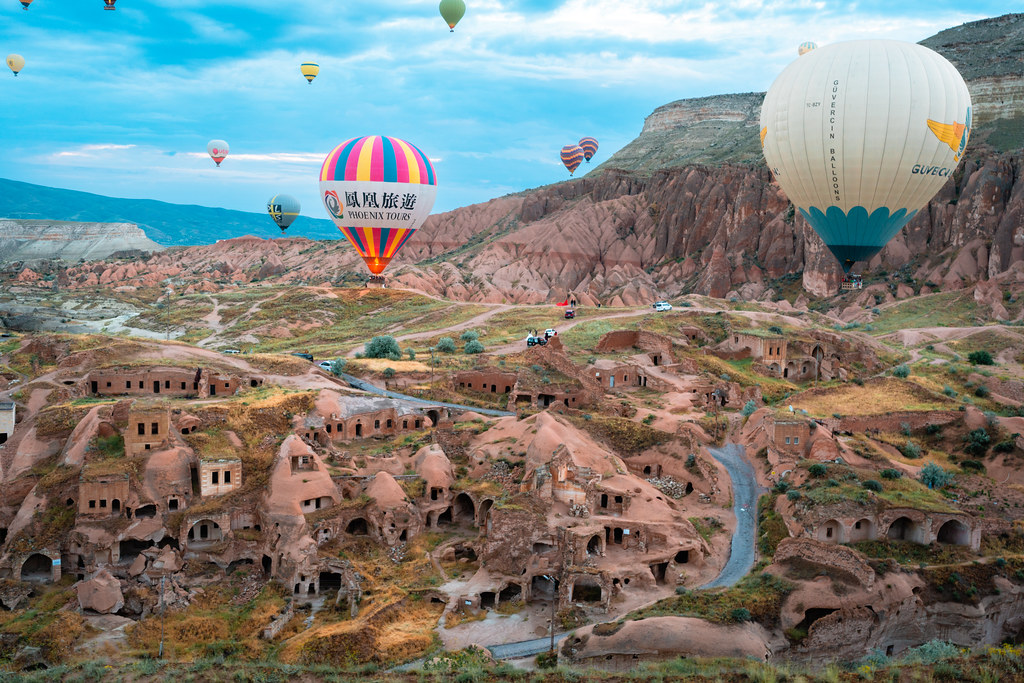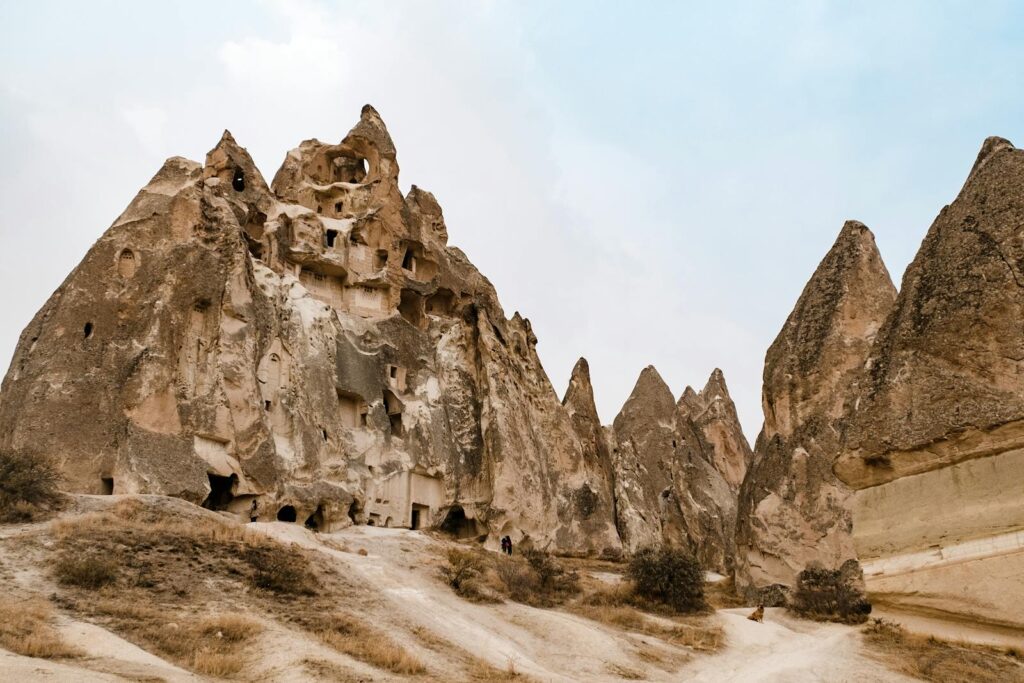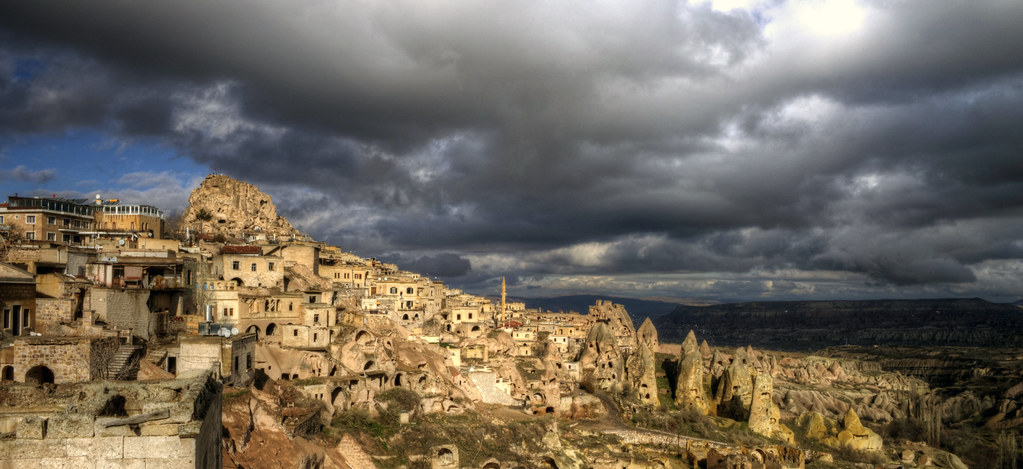Facts About Cappadocia Turkey: Before delving into fascinating facts about Cappadocia Turkey, let’s take a moment to appreciate the fantastical lands of Cappadocia. Situated in central Turkey, Cappadocia is renowned for its breathtaking landscape of whimsical fairy chimneys and ancient rock formations, akin to scenes from a fantasy novel. Beyond its striking geological oddities, Cappadocia boasts a rich cultural heritage, with cave dwellings, rock-cut churches adorned with ancient frescoes, and underground cities dating back to early Christian times.
General Information About Cappadocia Turkey
1. How old is Cappadocia Turkey?
Cappadocia’s landscape, characterized by fairy chimneys and rock formations, was shaped over millions of years through volcanic eruptions and erosion processes that began around 60 million years ago. However, human habitation in the region dates back to at least the late Bronze Age, around 1600 BCE, making Cappadocia a land steeped in both natural and human history.
2. Why is Cappadocia unique?
Cappadocia stands out for its extraordinary landscape of fairy chimneys and vast rock formations, creating a surreal, almost otherworldly scene. What makes it even more remarkable is the extensive human history intertwined with the geological wonders, where ancient inhabitants ingeniously carved homes, churches, and entire underground cities into the soft volcanic rock.
3. What is the story of Cappadocia Turkey?
Often referred to as the “land of beautiful horses,” Cappadocia has a rich history intertwined with the significance of horses. The region’s vast landscapes and valleys provided ideal conditions for horse breeding, playing a crucial role in the military and economic prosperity of various empires throughout history.

4. Who built the caves in Cappadocia?
The caves in Cappadocia were primarily carved out by early Christians seeking refuge from Roman persecution, starting from the 4th century AD. These extensive underground dwellings, churches, and cities showcase the ingenuity of the region’s inhabitants in utilizing the soft volcanic rock for shelter and protection.
5. Is Cappadocia a wonder of the world?
While Cappadocia is not officially listed as one of the “New Seven Wonders of the World,” its unique landscapes, historical significance, and cultural heritage often earn it the status of a wonder in the hearts of visitors and admirers worldwide.
6. Where to see the best views in Cappadocia?
For the most breathtaking views of Cappadocia’s surreal landscapes, head to iconic spots such as Sunset Point in Ortahisar, Love Valley, Red Valley, Devrent Valley (Imagination Valley), and Pigeon Valley, each offering panoramic vistas of the region’s natural wonders.

7. What are the underground cities in Cappadocia?
Cappadocia is home to several fascinating underground cities, including Derinkuyu, Kaymaklı, and Özkonak. These subterranean complexes served as shelter and defense for early Christians, showcasing remarkable architectural feats and ingenious engineering.
8. What are the local foods and drinks to try in Cappadocia?
Indulge in Cappadocia’s culinary delights, including its thriving wine culture with varieties made from indigenous grapes like Öküzgözü and Bogazkere. Don’t miss out on traditional dishes like Testi Kebab (Pottery Kebab), cooked in clay pots for a flavorful experience, and Testi Soup, a hearty soup cooked in sealed clay pots.
Exploring Cappadocia unveils not just geological wonders but also a tapestry of human history, culture, and culinary delights, making it a truly enchanting destination for travelers seeking a blend of natural beauty and cultural immersion.

FAQs about Cappadocia Turkey
Is Cappadocia in the Bible?
Yes, Cappadocia is mentioned in the New Testament of the Bible, particularly in the Book of Acts during the account of Pentecost. People from Cappadocia were present in Jerusalem and heard the Apostles speak in their own languages.
What is the best month to visit Cappadocia?
The best months to visit Cappadocia are typically April, May, September, and October. These months offer mild weather, ideal for outdoor activities such as hiking and hot air balloon rides. Avoiding the extreme summer heat and winter cold, these months provide comfortable temperatures for exploring Cappadocia’s wonders.
Are there still Christians in Cappadocia?
Yes, although a minority, there are still Christians in Cappadocia. The region has a rich Christian heritage, dating back to its role as a refuge for early Christians during Roman persecution. Despite historical changes, Christianity remains part of Cappadocia’s cultural fabric.
What happened to Christians in Cappadocia?
Over the centuries, the Christian population in Cappadocia experienced shifts due to political and religious changes. During the early Christian era, Cappadocia flourished as a religious center with rock-cut churches and monasteries. However, with the rise of Islam and the Ottoman Empire, many Christians converted or migrated to other regions.
How do I book a hot air balloon ride in Cappadocia?
Booking a hot air balloon ride in Cappadocia is typically done through tour operators. Check availability and pricing for your preferred dates and book in advance, especially during peak seasons. Provide necessary information like your name and contact details, and confirm your reservation with the tour operator for an unforgettable experience soaring above Cappadocia’s stunning landscapes.


